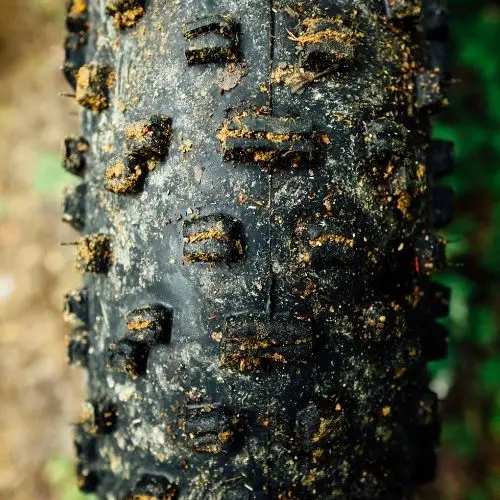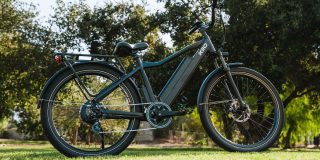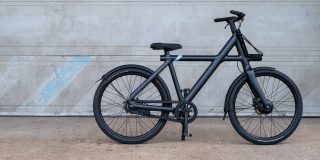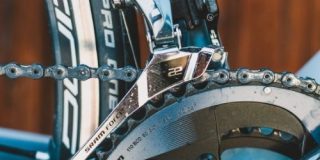Have you ever wondered just how your bicycle braking system works? Or have you questioned what type of braking systems and mechanics bicycles have to decelerate and brake? While you may believe that bicycles may have either straightforward or simple braking systems in place, multiple elements work together to stop your bicycle in its tracks.
Three separate elements work to stop your bicycle when it is in motion. First, you have the mechanism that you, the rider, use to apply the brakes. This application then requires a mechanism that will transmit the signal to your brakes, and it is this transmission that is then sent to your brake mechanism itself, the friction of this brake mechanism on the wheel then slows the bicycle down.
Depending on the type of bicycle that you have, your bike could have one of three main brake systems. These are rim brakes, disc brakes, and drum brakes. Below, you can read further information about the three primary brake systems that bicycles tend to use today, from how the brake systems themselves work, to whether there is anything that can affect their braking abilities.

1. Rim Brakes
When you apply the brakes, if your bicycle has rim brakes fitted, the pressure of applying the brakes will apply force to your friction pads. These pads are attached to the rim of your bicycle wheels and are what cause your bicycle to brake. Hence, the term rim breaks.
The method of applying the brakes when your bike has rim brakes tends to be through applying pressure to a lever located on your bike’s handlebars. The brake pads themselves cause your bicycle to slow and the brake tends to be made out of either rubber, leather, or cork.
Rim brakes are the perfect choice if you are looking for light and inexpensive brakes for your bicycle. However, it must be noted that they tend to need a lot of maintenance. When you apply the brakes when using rim brakes, thermal heating will be created, which can cause them to become faulty over time and less reliable in wet conditions.
2. Disc Brakes
Whereas disc brakes are usually identifiable by their metal rotor that is attached to the hub of your wheel. It is these metal rotors, with the calipers that contain special brake pads which are located on the frame, that decelerate and stop your bicycle.
This specific type of brake tends to be applied to mountain bikes, as they have very strong and durable braking capabilities. The lifespan of a disc brake can be further lengthened if you opt for a hydraulic system.
As they work to maintain a consistent pad to rotor gap, which allows cyclists to apply the same amount of pressure for the same braking performance, even as the pad wears down.
If your disc brakes do not use a hydraulic system, then it probably works by using a cable. These cable-actuated brakes tend to be cheaper and require less maintenance but are not as powerful under braking.
3. Drum Brakes
The final primary brake system that most bicycles use is a drum braking system. These tend to be quite similar to the brakes that you will find on a motor car, except they do not use a hydraulic system, rather they use a cable.
When you start to apply brake pressure to your bicycle, and your bike uses a drum brake, there will be two brake pads that will be applying outward pressure to your brake surface. This tends to happen within a small hub shell, located in the center of your bicycle wheel.
You will find that you will receive consistent and reliable braking in any weather condition when you are using drum breaks. This is because the entire braking system is located within a small compact, but the fully enclosed area, cannot get affected by any weather conditions.
Drum brakes tend to be found on utility bikes and are quite popular throughout the Netherlands.
- Why Are My Bikes Brakes Hard To Pull?
- Why Your Bicycle Brakes Might Be Rubbing: A Helpful Article
- Imagine That: Why Your Bike Brakes Might Be Squealing
Frequently Asked Questions
Hydraulic brakes are bicycle brakes that use fluid pressure to stop the bicycle. The bicycle’s pedals are connected to a piston in the bicycle’s frame, which pressurizes fluid in a chamber in the bicycle’s frame. The fluid then flows through a hose to the bicycle’s brakes, where it pressurizes a second chamber. This pressurized chamber forces a pad against the bicycle’s rim, causing the bicycle to slow down or stop. Hydraulic brakes are more effective than mechanical brakes, and they require less effort to operate. As a result, they are often used on mountain bikes and other bicycles that are subject to heavy braking.
It’s a common question among beginner bicyclists: should you use the front or rear brakes? The simple answer is that it depends on the situation. If you need to stop quickly, then you should use both brakes. However, if you’re just trying to slow down or control your speed, then the rear brake will suffice. This is because the front brake is much more powerful than the rear brake, and it’s easy to accidentally lock up the front wheels, which can cause you to lose control and crash. So, when in doubt, use the rear brake. And always remember to practice braking in a safe area before hitting the open road.
There are several potential causes for this problem, but the most likely culprit is incorrect bicycle maintenance. Brakes rely on friction to work effectively, so if your bicycle’s tires are not properly inflated or the brake pads are worn down, you may find that your bike doesn’t stop as quickly as you would like. Additionally, riding in wet weather can also cause braking problems, as water can reduce the effectiveness of your brakes. Another big reason is that you (or the bicycle) are braking too hard, and the wheels lock up, rather than gently bringing you to the stop.
Conclusion
While the general braking system is easy to understand, the rider applies a brake pressure, which is then transmitted to an endpoint which is the braking mechanism itself. There are a large variety of different braking systems that bicycles use today, the three main ones being rim brakes, disc brakes, and drum brakes.















